Impacto de la Economía Circular en la Gestión Ambiental en las Empresas
Resumen
Este artículo tiene como finalidad determinar el impacto de la economía circular en la gestión ambiental empresarial, a partir del análisis de la literatura científica disponible. Se realizó una revisión sistemática de literatura conforme al protocolo PRISMA y la metodología propuesta por Petticrew y Roberts, adaptada a las ciencias sociales. La búsqueda se realizó en la base de datos Scopus, considerando publicaciones entre 2015 y 2024. Se establecieron criterios de inclusión y exclusión, y se evaluó la calidad integral de los documentos seleccionados. Los resultados revelan un incremento sostenido en las investigaciones en el campo de conocimiento, con un liderazgo notable de instituciones europeas, particularmente de Italia. Los hallazgos evidencian que la economía circular contribuye significativamente a la optimización de la gestión ambiental mediante la reducción de residuos, la eficiencia en el uso de recursos y la prolongación del ciclo de vida de productos. Igualmente, se destacan beneficios económicos y reputacionales para las empresas. En conclusión, se reafirma la necesidad de fomentar la integración de modelos circulares en la gestión organizacional, mediante políticas públicas, cooperación intersectorial y compromiso empresarial con la sostenibilidad.
Descargas
Citas
Aarikka-Stenroos L.; Ritala P.; Thomas L.D.W. (2021). Circular economy ecosystems: A typology, definitions, and implications. Research Handbook of Sustainability Agency, 260–276. https://doi.org/10.4337/9781789906035.00024
Abbate S.; Centobelli P.; Cerchione R.; Giardino G.; Passaro R. (2023). Coming out the egg: Assessing the benefits of circular economy strategies in agri-food industry. International Journal of Cleaner Production, 385. https://doi.org/10.1016/j.jclepro.2022.135665
Abuabara L.; Paucar-Caceres A.; Burrowes-Cromwell T. (2019). Consumers’ values and behaviour in the Brazie lian coffee-in-capsules market: promoting circular economy. Journal of Production Research, 57, 7269-7288. https://doi.org/10.1080/00207543.2019.1629664
Accenture & Ellen MacArthur Foundation (2019). Waste to Wealth: Creating Advantage in a Circular Economy (https://www.ellenmacarthurfoundation.org/assets/downloads/publications/Waste-to-Wealth_Accenture-Report_2019.pdf).
Agyabeng-Mensah Y.; Baah C.; Afum E.; Kumi C.A. (2023). Circular supply chain practices and corporate sustainability performance: do ethical supply chain leadership and environmental orientation make a difference?. Journal of Manufacturing Technology Management, 34, 213-233. https://doi.org/10.1108/JMTM-08-2022-0296
Ansar M.A.; Assawadithalerd M.; Tipmanee D.; Laokiat L.; Khamdahsag P.; Kittipongvises S. (2021). Occupational exposure to hazards and volatile organic compounds in small-scale plastic recycling plants in Thailand by integrating risk and life cycle assessment concepts. Journal of Cleaner Production, 329. https://doi.org/10.1016/j.jclepro.2021.129582
Avadanei M.; Olaru S.; Ionescu I.; Ursache M.; Ciobanu L.; Alexa L.; Luca A.; Olmos M.; Aslanidis T.; Belakova D.; Silva C. (2020). ICT new tools for a sustainable textile and clothing industry. Industria Textila, 71, 504-512. https://doi.org/10.35530/IT.071.05.1811
Averina E.; Frishammar J.; Parida V. (2022). Assessing sustainability opportunities for circular business models. Business Strategy and the Environment, 31, 1464-1487. https://doi.org/10.1002/bse.2964
Barón Dorado A.; Giménez Leal G.; de Castro Vila R. (2022). Environmental policy and corporate sustainability: The mediating role of environmental management systems in circular economy adoption. Corporate Social Responsibility and Environmental Management, 29, 830-842. https://doi.org/10.1002/csr.2238
Belaud J.-P.; Adoue C.; Vialle C.; Chorro A.; Sablayrolles C. (2019). A circular economy and industrial ecology toolbox for developing an eco-industrial park: perspectives from French policy. Clean Technologies and Environmental Policy, 21, 967-985. https://doi.org/10.1007/s10098-019-01677-1
Blomsma F.; Tennant M.; Ozaki R. (2023). Making sense of circular economy: Understanding the progression from idea to action. Business Strategy and the Environment, 32, 1059-1084. https://doi.org/10.1002/bse.3107
Bocken, N. M. P., Short, S. W., Rana, P., & Evans, S. (2016). A literature and practice review to develop sustainable business model archetypes. Journal of Cleaner Production, 65, 42-56. https://doi.org/10.1016/j.jclepro.2013.11.039
Boesen S.; Bey N.; Niero M. (2019). Environmental sustainability of liquid food packaging: Is there a gap between Danish consumers' perception and learnings from life cycle assessment?. Journal of Cleaner Production, 210, 1193-1206. https://doi.org/10.1016/j.jclepro.2018.11.055
Bonato S.V.; Augusto de Jesus Pacheco D.; Schwengber ten Caten C.; Caro D. (2022). The missing link of circularity in small breweries’ value chains: Unveiling strategies for waste management and biomass valorization. Journal of Cleaner Production, 336. https://doi.org/10.1016/j.jclepro.2021.130275
Bozhanova V.; Korenyuk P.; Lozovskyi O.; Belous-Sergeeva S.; Bielienkova O.; Koval V. (2022). Green Enterprise Logistics Management System in Circular Economy. International Journal of Mathematical, Engineering and Management Sciences, Vol 7, 350-363. https://doi.org/10.33889/IJMEMS.2022.7.3.024
Brändström J.; Eriksson O. (2022). How circular is a value chain? Proposing a Material Efficiency Metric to evaluate business models. Journal of Cleaner Production, Vol 342. https://doi.org/10.1016/j.jclepro.2022.130973
Bressanelli G.; Pigosso D.C.A.; Saccani N.; Perona M. (2021). Enablers, levers and benefits of Circular Economy in the Electrical and Electronic Equipment supply chain: a literature review. Journal of Cleaner Production, 298. https://doi.org/10.1016/j.jclepro.2021.126819
Cavicchi C.; Vagnoni E. (2022). The role of performance measurement in assessing the contribution of circular economy to the sustainability of a wine value chain. British Food Journal, 124, 1551-1568. https://doi.org/10.1108/BFJ-08-2021-0920
Ceballos-Parra, P.J.; W. A. Sarache y D.M. Gómez. (2018). Un Análisis Bibliométrico de las Tendencias en Logística Humanitaria. Información Tecnológica, 29(1), 91-104 https://doi.org/10.4067/S0718-07642018000100091
Centobelli P.; Cerchione R.; Esposito E.; Passaro R.; Shashi (2021). Determinants of the transition towards circular economy in SMEs: A sustainable supply chain management perspective. International Journal of Production Economics, 242. https://doi.org/10.1016/j.ijpe.2021.108297
Chavez R.; Malik M.; Ghaderi H.; Yu W. (2023) Environmental collaboration with suppliers and cost performance: exploring the contingency role of digital orientation from a circular economy perspective. International Journal of Operations and Production Management, 3, 651-675. https://doi.org/10.1108/IJOPM-01-2022-0072
Chen P.; Dagestani A.A. (2023). What lies about circular economy practices and performance? Fresh insights from China. Journal of Cleaner Production, Vol 416. https://doi.org/10.1016/j.jclepro.2023.137893
Chen S.; Lakkanawanit P.; Suttipun M.; Xue H. (2023). Environmental regulation and corporate performance: The effects of green financial management and top management’s environmental awareness. Cogent Business and Management, 10. https://doi.org/10.1080/23311975.2023.2209973
Comisión Europea. (2021). Circular Economy Action Plan. European Union. https://environment.ec.europa.eu/strategy/circular-economy-action-plan_en
Crome C.; Graf-Drasch V.; Hawlitschek F.; Zinsbacher D. (2023). Circular economy is key! Designing a digital artifact to foster smarter household biowaste sorting. Journal of Cleaner Production, 423. https://doi.org/10.1016/j.jclepro.2023.138613
Daddi T.; Ceglia D.; Bianchi G.; de Barcellos M.D. (2019). Paradoxical tensions and corporate sustainability: A focus on circular economy business cases. Corporate Social Responsibility and Environmental Management, 26, 770-780. https://doi.org/10.1002/csr.1719
Dekkers, O. M., Vandenbroucke, J. P., Cevallos, M., Renehan, A. G., Altman, D. G., & Egger, M. (2019). COSMOS-E: guidance on conducting systematic reviews and meta-analyses of observational studies of etiology. PLoS medicine, 16(2), e1002742.
Dey P.K.; Malesios C.; Chowdhury S.; Saha K.; Budhwar P.; De D. (2022). Adoption of circular economy practices in small and medium-sized enterprises: Evidence from Europe. International Journal of Production Economics, 248. https://doi.org/10.1016/j.ijpe.2022.108496
Dey P.K.; Malesios C.; De D.; Budhwar P.; Chowdhury S.; Cheffi W. (2020). Circular economy to enhance sustainability of small and medium-sized enterprises. Business Strategy and the Environment, 29, 2145-2169. https://doi.org/10.1002/bse.2492
Dezi L.; Hysa X.; Calabrese M.; Mercuri F. (2022). Open Total Quality Management in the Circular Economy age: a social enterprise perspective through the case of Patagonia. Total Quality Management and Business Excellence. https://doi.org/10.1080/14783363.2022.2051698
Djuric Ilic D.; Eriksson O.; Ödlund (former Trygg) L.; Åberg M. (2018). No zero burden assumption in a circular economy. Journal of Cleaner Production, 182, 352-362. https://doi.org/10.1016/j.jclepro.2018.02.031
Dragomir V.D.; Dumitru M. (2022). Practical solutions for circular business models in the fashion industry. Cleaner Logistics and Supply Chain, 4. https://doi.org/10.1016/j.clscn.2022.100040
Ellen MacArthur Foundation. (2015). Towards a Circular Economy: Business Rationale for an Accelerated Transition. https://kidv.nl/media/rapportages/towards_a_circular_economy.pdf?1.2.1
European Commission (2020). A New Circular Economy Action Plan for a Cleaner and More Competitive Europe. (https://ec.europa.eu/environment/circular-economy/pdf/new_circular_economy_action_plan.pdf).
Fontoura P.; Coelho A. (2022). How to boost green innovation and performance through collaboration in the supply chain: Insights into a more sustainable economy. Journal of Cleaner Production, Vol 359. https://doi.org/10.1016/j.jclepro.2022.132005
Foro Económico Mundial. (2022). The Global Risks Report (2022). https://www3.weforum.org/docs/WEF_The_Global_Risks_Report_2022.pdf
Fraccascia L.; Yazan D.M.; Albino V.; Zijm H. (2020). The role of redundancy in industrial symbiotic business development: A theoretical framework explored by agent-based simulation. International Journal of Production Economics, 221. https://doi.org/10.1016/j.ijpe.2019.08.006
Garza-Reyes J.A.; Yu M.; Kumar V.; Upadhyay A. (2018). Total quality environmental management: Adoption status in the Chinese manufacturing sector. TQM Journal, Vol 30, 2-19. https://doi.org/10.1108/TQM-05-2017-0052
Gast, I.; K. Schildkamp y J.T. van der Veen. (2017). Team-Based Professional Development Interventions in Higher Education: A Systematic Review, Review of Educational Research, 87(4), 736–767 https://doi.org/10.3102/0034654317704306
Geissdoerfer, M., Savaget, P., Bocken, N. M. P., & Hultink, E. J. (2018). The Circular Economy – A new sustainability paradigm?. Journal of Cleaner Production, 143, 757-768. https://doi.org/10.1016/j.jclepro.2016.12.048
Ghisellini P.; Ji X.; Liu G.; Ulgiati S. (2018). Evaluating the transition towards cleaner production in the construction and demolition sector of China: A review. Journal of Cleaner Production, 195, 418-434. https://doi.org/10.1016/j.jclepro.2018.05.084
Gil-Lamata M.; Latorre-Martínez M.P. (2022). The Circular Economy and Sustainability: A Systematic Literature Review; [La economía circular y la sostenibilidad: una revisión sistemática de la literatura]. Cuadernos de Gestion, Vol 22, 129-142. https://doi.org/10.5295/CDG.211492MG
Global E-waste Monitor. (2020). The Global E-waste Statistics Partnership. https://ewastemonitor.info/wpcontent/uploads/2020/11/GEM_2020_def_july1_low.pdf
Govindan K. (2023). How digitalization transforms the traditional circular economy to a smart circular economy for achieving SDGs and net zero. Transportation Research Part E: Logistics and Transportation Review, 177. https://doi.org/10.1016/j.tre.2023.103147
Goyal S.; Esposito M.; Kapoor A. (2018). Circular economy business models in developing economies: Lessons from India on reduce, recycle, and reuse paradigms. Thunderbird International Business Review, 60, 729-740. https://doi.org/10.1002/tie.21883
Gunningham, N., & Sinclair, D (2002). Regulatory Pluralism: Designing Policy Mixes for Environmental Protection. Law & Policy, Vol 21. https://doi.org/10.1111/1467-9930.00065
Hens L.; Block C.; Cabello-Eras J.J.; Sagastume-Gutierez A.; Garcia-Lorenzo D.; Chamorro C.; Herrera Mendoza K.; Haeseldonckx D.; Vandecasteele C. (2018). On the evolution of “Cleaner Production” as a concept and a practice. Journal of Cleaner Production, 172, 3323-3333. https://doi.org/10.1016/j.jclepro.2017.11.082
Herrero-Luna S.; Ferrer-Serrano M.; Latorre-Martinez M.P. (2022). Circular economy and innovation: a systematic literature review. Central European Business Review, 11, 65-84. https://doi.org/10.18267/j.cebr.275
Hong J.; Zhang Y.; Ding M. (2018). Sustainable supply chain management practices, supply chain dynamic capabilities, and enterprise performance. Journal of Cleaner Production, 172, 3508-3519. https://doi.org/10.1016/j.jclepro.2017.06.093
Hsu C.-L.; Chen M.-C. (2021). Advocating recycling and encouraging environmentally friendly habits through gamification: An empirical investigation. Technology in Society, 66. https://doi.org/10.1016/j.techsoc.2021.101621
Hudnurkar M.; Ambekar S.; Bhattacharya S.; Sheorey P.A. (2023). Relationship of total quality management with corporate sustainability in the MSME sector: does innovation capability play a mediating role?. TQM Journal, 35, 1860-1886. https://doi.org/10.1108/TQM-03-2022-0095
Husgafvel R.; Karjalainen E.; Linkosalmi L.; Dahl O. (2016). Recycling industrial residue streams into a potential new symbiosis product – The case of soil amelioration granules. Journal of Cleaner Production, 135, 90-96. https://doi.org/10.1016/j.jclepro.2016.06.092
International Organization for Standardization (2015). ISO 14001:2015 - Environmental management systems - Requirements with guidance for use. (https://www.iso.org/standard/60857.html).
Kaipainen J.; Aarikka-Stenroos L. (2022). How to renew business strategy to achieve sustainability and circularity? A process model of strategic development in incumbent technology companies. Business Strategy and the Environment, 31, 1947-1963. https://doi.org/10.1002/bse.2992
Karaman A.S.; Kilic M.; Uyar A. (2020). Green logistics performance and sustainability reporting practices of the logistics sector: The moderating effect of corporate governance. Journal of Cleaner Production, 258. https://doi.org/10.1016/j.jclepro.2020.120718
Kazancoglu Y.; Ekinci E.; Mangla S.K.; Sezer M.D.; Kayikci Y. (2021). Performance evaluation of reverse logistics in food supply chains in a circular economy using system dynamics. Business Strategy and the Environment, 30, 71-91. https://doi.org/10.1002/bse.2610
Kazancoglu Y.; Kazancoglu I.; Sagnak M. (2018) A new holistic conceptual framework for green supply chain management performance assessment based on circular economypp. Journal of Cleaner Production, 195, 1282-1299. https://doi.org/10.1016/j.jclepro.2018.06.015
Kazancoglu Y.; Sagnak M.; Mangla S.K.; Sezer M.D.; Pala M.O. (2021). A fuzzy based hybrid decision framework to circularity in dairy supply chains through big data solutions. Technological Forecasting and Social Change, 170. https://doi.org/10.1016/j.techfore.2021.120927
Keng Z.X.; Chong S.; Ng C.G.; Ridzuan N.I.; Hanson S.; Pan G.-T.; Lau P.L.; Supramaniam C.V.; Singh A.; Chin C.F.; Lam H.L. (2020). Community-scale composting for food waste: A life-cycle assessment-supported case study. Journal of Cleaner Production, 261. https://doi.org/10.1016/j.jclepro.2020.121220
Khan S.A.R.; Ahmad Z.; Sheikh A.A.; Yu Z. (2023). Green technology adoption paving the way toward sustainable performance in circular economy: a case of Pakistani small and medium enterprises. International Journal of Innovation Science. https://doi.org/10.1108/IJIS-10-2022-0199
Khan S.A.R.; Ponce P. (2022). Investigating the effects of the outbreak of COVID-19 on perishable food supply chains: an empirical study using PLS-SEM. International Journal of Logistics Management, 33, 773-795. https://doi.org/10.1108/IJLM-12-2020-0496
Kolling C.; de Medeiros J.F.; Duarte Ribeiro J.L.; Morea D. (2022). A conceptual model to support sustainable Product-Service System implementation in the Brazilian agricultural machinery industry. Journal of Cleaner Production, 355. https://doi.org/10.1016/j.jclepro.2022.131733
Korhonen, J., Honkasalo, A., & Seppälä, J. (2018). Circular Economy: The Concept and its Limitations. Ecological Economics, 143, 37-46.(https://doi.org/10.1016/j.ecolecon.2017.06.041)
Kristensen H.S.; Mosgaard M.A.; Remmen A. (2021). Integrating circular principles in environmental management systems. Journal of Cleaner Production, 286. https://doi.org/10.1016/j.jclepro.2020.125485
Kurilova-Palisaitiene J.; Sundin E.; Poksinska B. (2018). Remanufacturing challenges and possible lean improvements. Journal of Cleaner Production, 172, 3225-3236. https://doi.org/10.1016/j.jclepro.2017.11.023
Kuznetsova E.; Zio E.; Farel R. (2016). A methodological framework for Eco-Industrial Park design and optimization. Journal of Cleaner Production, 126, 308-324. https://doi.org/10.1016/j.jclepro.2016.03.025
Le T.T. (2022). How humane entrepreneurship fosters sustainable supply chain management for a circular economy moving towards sustainable corporate performance. Journal of Cleaner Production, 368. https://doi.org/10.1016/j.jclepro.2022.133178
Liang W.-Z.; Zhao G.-Y.; Hong C.-S. (2018). Performance assessment of circular economy for phosphorus chemical firms based on VIKOR-QUALIFLEX method. Journal of Cleaner Production, 196, 1365-1378. https://doi.org/10.1016/j.jclepro.2018.06.147
Lichtenthaler U. (2022). Explicating a sustainability-based view of sustainable competitive advantage. Journal of Strategy and Management, 15, 76-95. https://doi.org/10.1108/JSMA-06-2021-0126
Lievano, J. A. B., Sanchez, J. A. S., López, S. Y. S., & Suarez, V. F. V. (2025). Leadership and the development of the organizational culture of companies. A systematic review. Edelweiss Applied Science and Technology, 9(7), 2020-2041.
Lopes de Sousa Jabbour A.B.; Chiappetta Jabbour C.J.; Choi T.-M.; Latan H. (2022). ‘Better together’: Evidence on the joint adoption of circular economy and industry 4.0 technologies. International Journal of Production Economics, 252. https://doi.org/10.1016/j.ijpe.2022.108581
Lopera, N. A. L., Angarita, R. S. J., Cañas, Y. A. F., & Lievano, J. A. B. (2025). The contribution of corporate social responsibility to the sustainability of small and medium-sized enterprises: A systematic review. Edelweiss Applied Science and Technology, 9(6), 441-458.
Low J.S.C.; Tjandra T.B.; Lu W.F.; Lee H.M. (2016). Adaptation of the Product Structure-based Integrated Life cycle Analysis (PSILA) technique for carbon footprint modelling and analysis of closed-loop production systems. Journal of Cleaner Production, 120, 105-123. https://doi.org/10.1016/j.jclepro.2015.09.095
Lu J.; Ren L.; Zhang C.; Rong D.; Ahmed R.R.; Streimikis J. (2020). Modified Carroll's pyramid of corporate social responsibility to enhance organizational performance of SMEs industry. Journal of Cleaner Production, 271. https://doi.org/10.1016/j.jclepro.2020.122456
Luthra S.; Sharma M.; Kumar A.; Joshi S.; Collins E.; Mangla S. (2022). Overcoming barriers to cross-sector collaboration in circular supply chain management: a multi-method approach. Transportation Research Part E: Logistics and Transportation Review, 157. https://doi.org/10.1016/j.tre.2021.102582
MacArthur, E. (2013). Towards the circular economy. Journal of industrial ecology, 2(1), 23-44. https://emf.s3.amazonaws.com/downloads/Towards_A_Circular_Economy.pdf
Marín-Vinuesa L.M.; Portillo-Tarragona P.; Scarpellini S. (2023). Firms' capabilities management for waste patents in a circular economy. International Journal of Productivity and Performance Management, 72, 1368-1391. https://doi.org/10.1108/IJPPM-08-2021-0451
Martin M.; Heiska M.; Björklund A. (2021). Environmental assessment of a product-service system for renting electric-powered tolos. Journal of Cleaner Production, 281. https://doi.org/10.1016/j.jclepro.2020.125245
Masi D.; Kumar V.; Garza-Reyes J.A.; Godsell J. (2018). Towards a more circular economy: exploring the awareness, practices, and barriers from a focal firm perspective. Production Planning and Control, 29, 239-550. https://doi.org/10.1080/09537287.2018.1449246
Mastos T.D.; Nizamis A.; Terzi S.; Gkortzis D.; Papadopoulos A.; Tsagkalidis N.; Ioannidis D.; Votis K.; Tzovaras D. (2021). Introducing an application of an industry 4.0 solution for circular supply chain management. Journal of Cleaner Production, 300. https://doi.org/10.1016/j.jclepro.2021.126886
Mead T.; Jeanrenaud S.; Bessant J. (2020). Factors influencing the application of nature as inspiration for sustainability-oriented innovation in multinational corporations. Business Strategy and the Environment, 29, 3162-3173. https://doi.org/10.1002/bse.2564
Meier O.; Gruchmann T.; Ivanov D. (2023). Circular supply chain management with blockchain technology: A dynamic capabilities view. Transportation Research Part E: Logistics and Transportation Review, 176. https://doi.org/10.1016/j.tre.2023.103177
Merli R.; Preziosi M. (2018). The EMAS impasse: Factors influencing Italian organizations to withdraw or renew the registration. Journal of Cleaner Production, 172, 4532-4543. https://doi.org/10.1016/j.jclepro.2017.11.031
Mondal S.; Singh S.; Gupta H. (2023). Assessing enablers of green entrepreneurship in circular economy: An integrated approach. Journal of Cleaner Production, 388. https://doi.org/10.1016/j.jclepro.2023.135999
Mora, A. M. S., Soto, M. R., Rodríguez, J. P. V., & Lievano, J. A. B. (2025). Economía circular y sostenibilidad de pequeñas y medianas empresas. Una revisión sistemática. Revista Científica de Salud y Desarrollo Humano, 6(2), 1855-1898. https://doi.org/10.61368/r.s.d.h.v6i2.721
Morea D.; Fortunati S.; Martiniello L. (2021). Circular economy and corporate social responsibility: Towards an integrated strategic approach in the multinational cosmetics industry. Journal of Cleaner Production, 315. https://doi.org/10.1016/j.jclepro.2021.128232
Murray, A., Skene, K., & Haynes, K. (2017). The Circular Economy: An interdisciplinary exploration of the concept and application in a global context. Journal of Business Ethics, Vol 140(3), 369-380.(https://doi.org/10.1007/s10551-015-2693-2)
Napathorn C. (2022). The development of green skills across firms in the institutional context of Thailand. Asia-Pacific Journal of Business Administration, Vol 14, 33- 572. https://doi.org/10.1108/APJBA-10-2020-0370
Nasution A.H.; Aula M.; Ardiantono D.S. (2020). Circular economy business model design. International Journal of Integrated Supply Management, Vol 13, 18-177. https://doi.org/10.1504/IJISM.2020.107848
Nußholz J.L.K. (2018). A circular business model mapping tool for creating value from prolonged product lifetime and closed material loops. Journal of Cleaner Production, Vol 197, 185-194. https://doi.org/10.1016/j.jclepro.2018.06.112
ONU. (2021). Hacia el cero desechos en la moda y el textil. https://www.un.org/es/observances/zero-waste-day
Ormazabal M.; Prieto-Sandoval V.; Jaca C.; Santos J. (2016). An overview of the circular economy among SMEs in the Basque Country: A multiple case study. Journal of Industrial Engineering and Management, 9, 1047-1058. https://doi.org/10.3926/jiem.2065
Ormazabal M.; Prieto-Sandoval V.; Puga-Leal R.; Jaca C. (2018). Circular Economy in Spanish SMEs: Challenges and opportunities. Journal of Cleaner Production, 185, 157-167. https://doi.org/10.1016/j.jclepro.2018.03.031
Ottoni M.; Dias P.; Xavier L.H. (2020). A circular approach to the e-waste valorization through urban mining in Rio de Janeiro, Brazil. Journal of Cleaner Production, Vol 261. https://doi.org/10.1016/j.jclepro.2020.120990
Paes L.A.B.; Bezerra B.S.; Deus R.M.; Jugend D.; Battistelle R.A.G.(2019). Organic solid waste management in a circular economy perspective – A systematic review and SWOT analysis. Journal of Cleaner Production, 239. https://doi.org/10.1016/j.jclepro.2019.118086
Paletta A.; Leal Filho W.; Balogun A.-L.; Foschi E.; Bonoli A. (2019). Barriers and challenges to plastics valorisation in the context of a circular economy: Case studies from Italy. Journal of Cleaner Production, 241. https://doi.org/10.1016/j.jclepro.2019.118149
Pan Y.; Li H. (2016). Sustainability evaluation of end-of-life vehicle recycling based on emergy analysis: A case study of an end-of-life vehicle recycling enterprise in China. Journal of Cleaner Production, Vol 131, 219-227. https://doi.org/10.1016/j.jclepro.2016.05.045
Parlamento Europeo. (2022). Textiles and the environment: The role of the EU. https://www.europarl.europa.eu/RegData/etudes/BRIE/2022/729405/EPRS_BRI(2022)729405_EN.pdf
Patricio J.; Axelsson L.; Blomé S.; Rosado L. (2018). Enabling industrial symbiosis collaborations between SMEs from a regional perspective. Journal of Cleaner Production, 202, 10-1130. https://doi.org/10.1016/j.jclepro.2018.07.230
Pigosso, D.C.A., & McAloone, T.C. (2018). Circular Economy: A New Framework for Business Innovation. In: Sustainable Business Models (pp. 113-128). https://doi.org/10.1007/978-3-319-73952-0_7
Piyathanavong V.; Garza-Reyes J.A.; Kumar V.; Maldonado-Guzmán G.; Mangla S.K. (2019). The adoption of operational environmental sustainability approaches in the Thai manufacturing sector. Journal of Cleaner Production, 220, 21-528. https://doi.org/10.1016/j.jclepro.2019.02.093
Pohlmann C.R.; Scavarda A.J.; Alves M.B.; Korzenowski A.L. (2020). The role of the focal company in sustainable development goals: A Brazilian food poultry supply chain case study. Journal of Cleaner Production, 245. https://doi.org/10.1016/j.jclepro.2019.118798
Popay, J., Roberts, H., Sowden, A., Petticrew, M., Arai, L., Rodgers, M., & Duffy, S. (2006). Guidance on the conduct of narrative synthesis in systematic reviews. A product from the ESRC methods programme Version, 1(1), b92. https://www.academia.edu/download/39246301/02e7e5231e8f3a6183000000.pdf
Poponi S.; Arcese G.; Ruggieri A.; Pacchera F. (2023). Value optimisation for the agri-food sector: A circular economy approach. Business Strategy and the Environment, 32, 17-2867. https://doi.org/10.1002/bse.3274
Porter, M.E., & Van Der Linde, C. (1995). Green and Competitive: Ending the Stalemate. Harvard Business Review, 73(5), 120-134.
Portillo-Tarragona P.; Scarpellini S.; Marín-Vinuesa L.M. (2024). ‘Circular patents’ and dynamic capabilities: new insights for patenting in a circular economy. Technology Analysis and Strategic Management, 36, 1571-1586. https://doi.org/10.1080/09537325.2022.2106206
Prieto-Sandoval V.; Jaca C.; Santos J.; Baumgartner R.J.; Ormazabal M. (2019). Key strategies, resources, and capabilities for implementing circular economy in industrial small and medium enterprises. Corporate Social Responsibility and Environmental Management, 26, 1473-1484. https://doi.org/10.1002/csr.1761
Prieto-Sandoval V.; Ormazabal M.; Jaca C.; Viles E. (2018). Key elements in assessing circular economy implementation in small and medium-sized enterprises. Business Strategy and the Environment, 27, 1525-1534. https://doi.org/10.1002/bse.2210
PRISMA (2020). PRISMA translations policy. Disponible en: http://www.prisma-statement.org/Translations/TranslationsPolicy.aspx.
Puntillo P.; Gulluscio C.; Huisingh D.; Veltri S. (2021). Reevaluating waste as a resource under a circular economy approach from a system perspective: Findings from a case study. Business Strategy and the Environment, 30, 968-984. https://doi.org/10.1002/bse.2664
Rodríguez-Espíndola O.; Cuevas-Romo A.; Chowdhury S.; Díaz-Acevedo N.; Albores P.; Despoudi S.; Malesios C.; Dey P. (2022). The role of circular economy principles and sustainable-oriented innovation to enhance social, economic and environmental performance: Evidence from Mexican SMEs. International Journal of Production Economics, 248. https://doi.org/10.1016/j.ijpe.2022.108495
Rodríguez-González R.M.; Maldonado-Guzmán G.; Madrid-Guijarro A.; Garza-Reyes J.A. (2022). Does circular economy affect financial performance? The mediating role of sustainable supply chain management in the automotive industry. Journal of Cleaner Production, 379. https://doi.org/10.1016/j.jclepro.2022.134670
Salesa A.; León R.; Moneva J.M. (2023). Airlines practices to incorporate circular economy principles into the waste management system. Corporate Social Responsibility and Environmental Management, 30, 443-458. https://doi.org/10.1002/csr.2365
Saraji M.K.; Streimikiene D. (2022). Evaluating the circular supply chain adoption in manufacturing sectors: A picture fuzzy approach. Technology in Society, 70. https://doi.org/10.1016/j.techsoc.2022.102050
Sawe F.B.; Kumar A.; Garza-Reyes J.A.; Agrawal R. (2021). Assessing people-driven factors for circular economy practices in small and medium-sized enterprise supply chains: Business strategies and environmental perspectives. Business Strategy and the Environment, 30, 2951-2965. https://doi.org/10.1002/bse.2781
Scarpellini S.; Marín-Vinuesa L.M.; Aranda-Usón A.; Portillo-Tarragona P. (2020). Dynamic capabilities and environmental accounting for the circular economy in businesses. Sustainability Accounting, Management and Policy Journal, 11, 1129-1158. https://doi.org/10.1108/SAMPJ-04-2019-0150
Scarpellini S.; Marín-Vinuesa L.M.; Portillo-Tarragona P.; Moneva J.M. (2018). Defining and measuring different dimensions of financial resources for business eco-innovation and the influence of the firms’ capabilities. Journal of Cleaner Production, 204, 258-269. https://doi.org/10.1016/j.jclepro.2018.08.320
Scarpellini S.; Valero-Gil J.; Moneva J.M.; Andreaus M. (2020). Environmental management capabilities for a “circular eco-innovation”. Business Strategy and the Environment, 29, 1850-1864. https://doi.org/10.1002/bse.2472
Seles B.M.R.P.; Mascarenhas J.; Lopes de Sousa Jabbour A.B.; Trevisan A.H. (2022) Smoothing the circular economy transition: The role of resources and capabilities enablers. Business Strategy and the Environment, 31, 1814-1837. https://doi.org/10.1002/bse.2985
Sellitto M.A.; Almeida F.A. (2020). Strategies for value recovery from industrial waste: case studies of six industries from Brazil. Benchmarking, 27, 867-885. https://doi.org/10.1108/BIJ-03-2019-0138
Shahbazi S.; Wiktorsson M.; Kurdve M.; Jönsson C.; Bjelkemyr M. (2016). Material efficiency in manufacturing: swedish evidence on potential, barriers and strategies. Journal of Cleaner Production, 127, 438-450. https://doi.org/10.1016/j.jclepro.2016.03.143
Shpak N.; Melnyk O.; Horbal N.; Ruda M.; Sroka W. (2021). Assessing the implementation of the circular economy in the eu countrie. Forum Scientiae Oeconomia , 9. https://doi.org/10.23762/FSO_VOL9_NO1_2
Sihvonen S.; Partanen J. (2017). Eco-design practices with a focus on quantitative environmental targets: An exploratory content analysis within ICT sector. Journal of Cleaner Production, 143, 769-783. https://doi.org/10.1016/j.jclepro.2016.12.047
Silva F.C.; Shibao F.Y.; Kruglianskas I.; Barbieri J.C.; Sinisgalli P.A.A. (2019). Circular economy: analysis of the implementation of practices in the Brazilian network. Revista de Gestao, 26, 39-60. https://doi.org/10.1108/REGE-03-2018-0044
Singh J.; Ordoñez I. (2016). Resource recovery from post-consumer waste: important lessons for the upcoming circular economy. Journal of Cleaner Production, 134, 342-353. https://doi.org/10.1016/j.jclepro.2015.12.020
Šomplák R.; Kůdela J.; Smejkalová V.; Nevrlý V.; Pavlas M.; Hrabec D. (2019). Pricing and advertising strategies in conceptual waste management planning, 239. https://doi.org/ 10.1016/j.jclepro.2019.118068
Stumpf L.; Schöggl J.-P.; Baumgartner R.J. (2023). Circular plastics packaging – Prioritizing resources and capabilities along the supply chain. Technological Forecasting and Social Change, 188. https://doi.org/10.1016/j.techfore.2022.122261
Subramanian N.; Suresh M. (2022). The contribution of organizational learning and green human resource management practices to the circular economy: a relational analysis – evidence from manufacturing SMEs (part II). Learning Organization, 29, 443-462. https://doi.org/10.1108/TLO-06-2022-0068
Tiscini R.; Martiniello L.; Lombardi R. (2022). Circular economy and environmental disclosure in sustainability reports: Empirical evidence in cosmetic companies. Business Strategy and the Environment, Vol 31, 892-907. https://doi.org/10.1002/bse.2924
Torres, V. Y. S., Rodelo, A. R., Julio, R. C. C., & Lievano, J. A. B. (2025). Impact of artificial intelligence on business models in industry 4.0. bibliometric analysis and systematic review of the literature. Edelweiss Applied Science and Technology, 9(7), 2175-2192.
Urain I.; Eguren J.A.; Justel D. (2022). Development and validation of a tool for the integration of the circular economy in industrial companies: Case study of 30 companies. Journal of Cleaner Production, 370. https://doi.org/10.1016/j.jclepro.2022.133318
Urbinati A.; Rosa P.; Sassanelli C.; Chiaroni D.; Terzi S. (2020) Circular business models in the European manufacturing industry: A multiple case study analysis. Journal of Cleaner Production, 274. https://doi.org/10.1016/j.jclepro.2020.122964
Uvarova I.; Atstaja D.; Volkova T.; Grasis J.; Ozolina-Ozola I. (2023). The typology of 60R circular economy principles and strategic orientation of their application in business. Journal of Cleaner Production, 409. https://doi.org/10.1016/j.jclepro.2023.137189
Veiga Simão F.; Chambart H.; Vandemeulebroeke L.; Nielsen P.; Adrianto L.R.; Pfister S.; Cappuyns V. (2022). Mine waste as a sustainable resource for facing bricks. Journal of Cleaner Production, 368. https://doi.org/10.1016/j.jclepro.2022.133118
Velenturf A.P.M.; Jensen P.D.; Purnell P.; Jopson J.; Ebner N. (2019). A call to integrate economic, social and environmental motives into guidance for business support for the transition to a circular economy. Administrative Sciences, 9. https://doi.org/10.3390/admsci9040092
Virmani N.; Saxena P.; Raut R.D. (2022). Examining the roadblocks of circular economy adoption in micro, small, and medium enterprises (MSME) through sustainable development goals. Business Strategy and the Environment, 31, 2908-2930. https://doi.org/10.1002/bse.3054
Wen Z.; Hu Y.; Lee J.C.K.; Luo E.; Li H.; Ke S. (2018). Approaches and policies for promoting industrial park recycling transformation (IPRT) in China: Practices and lessons. Journal of Cleaner Production, 175, 1370-1380. https://doi.org/10.1016/j.jclepro.2017.10.202
Yadav G.; Luthra S.; Huisingh D.; Mangla S.K.; Narkhede B.E.; Liu Y. (2020). Development of a lean manufacturing framework to enhance its adoption within manufacturing companies in developing economies. Journal of Cleaner Production, 245. https://doi.org/10.1016/j.jclepro.2019.118726
Yu Y.; Xu J.; Zhang J.Z.; Wu Y.; Liao Z. (2022). Do circular economy practices matter for financial growth? An empirical study in China. Journal of Cleaner Production, Vol 370. https://doi.org/10.1016/j.jclepro.2022.133255
Yunan X.; Weixin L.; Yujie Y.; Hui W. (2021). Evolutionary game for the stakeholders in livestock pollution control based on circular economy. Journal of Cleaner Production, 282. https://doi.org/10.1016/j.jclepro.2020.125403
Zeng H.; Chen X.; Xiao X.; Zhou Z. (2017). Institutional pressures, sustainable supply chain management, and circular economy capability: Empirical evidence from Chinese eco-industrial park firms. Journal of Cleaner Production, 155, 54-65. https://doi.org/10.1016/j.jclepro.2016.10.093
Zhou Z.; Zhao W.; Chen X.; Zeng H. (2017). MFCA extension from a circular economy perspective: Model modifications and case study. Journal of Cleaner Production, 149, 110-125. https://doi.org/10.1016/j.jclepro.2017.02.049
Derechos de autor 2025 Liz Yadi Vivas Sánchez, Yarlin Adriana Quejada Palacios, Jhony Alexander Barrera Lievano

Esta obra está bajo licencia internacional Creative Commons Reconocimiento 4.0.

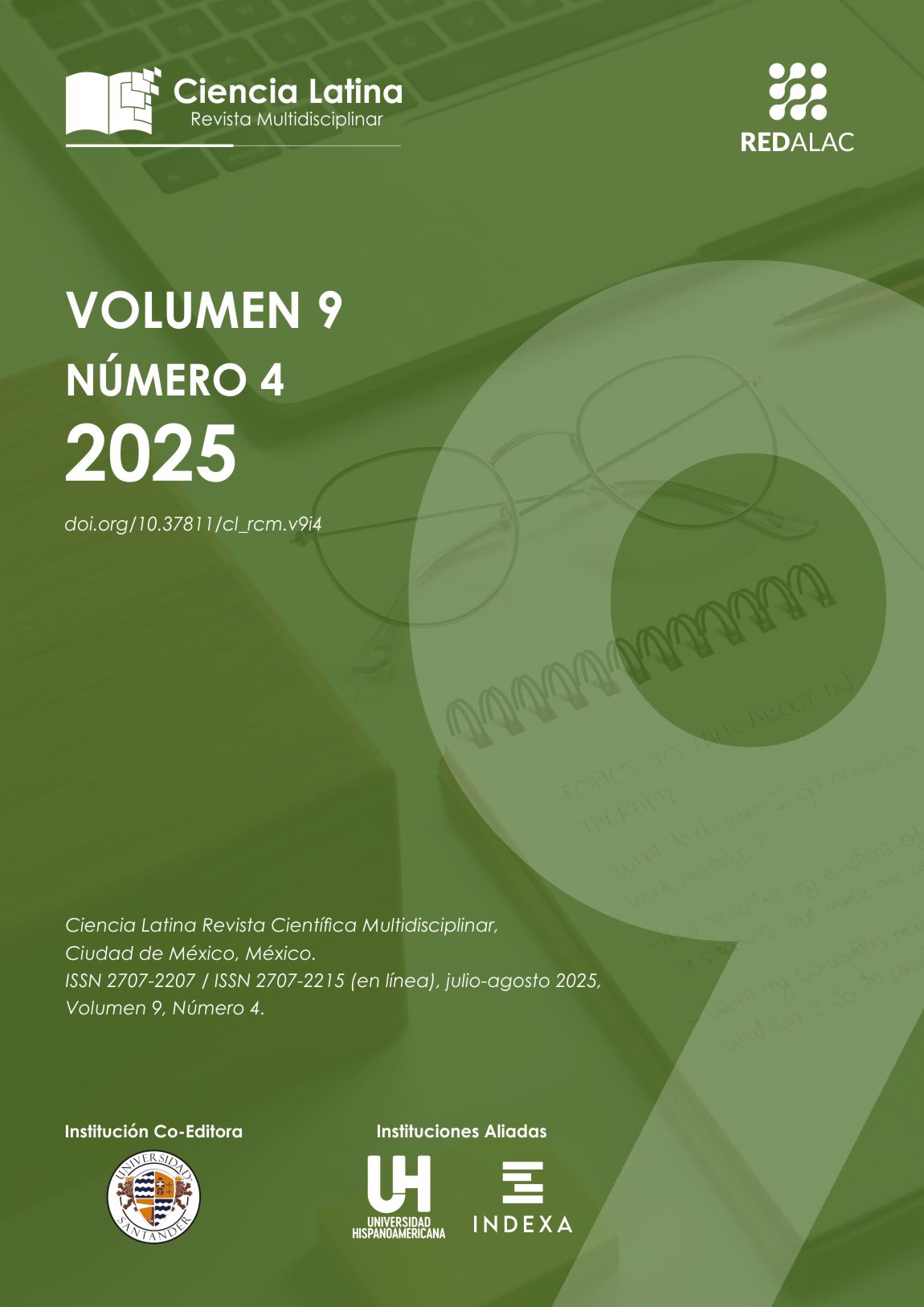

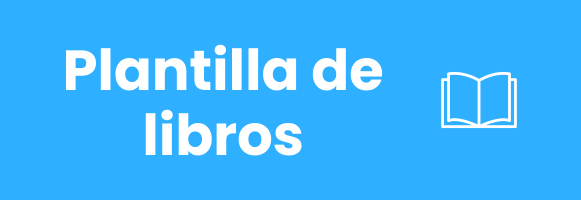
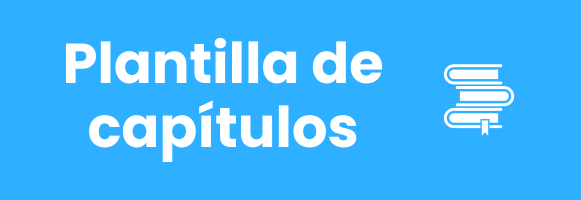
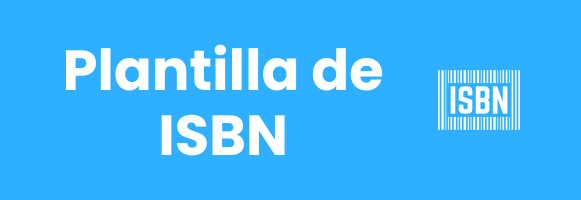
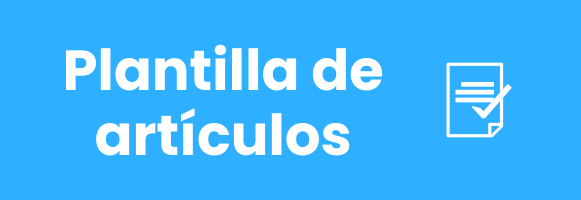


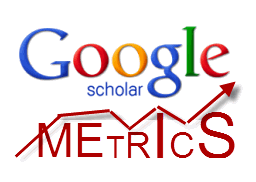
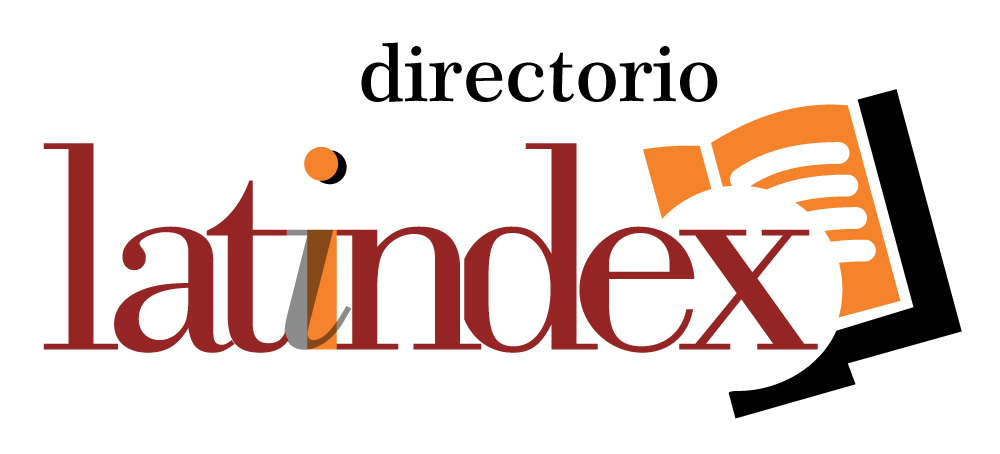
.png)
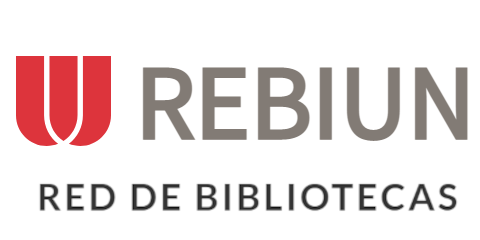







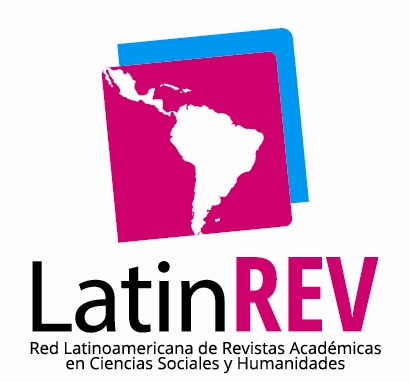

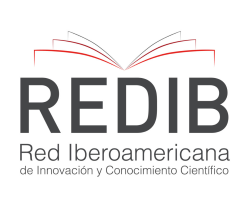


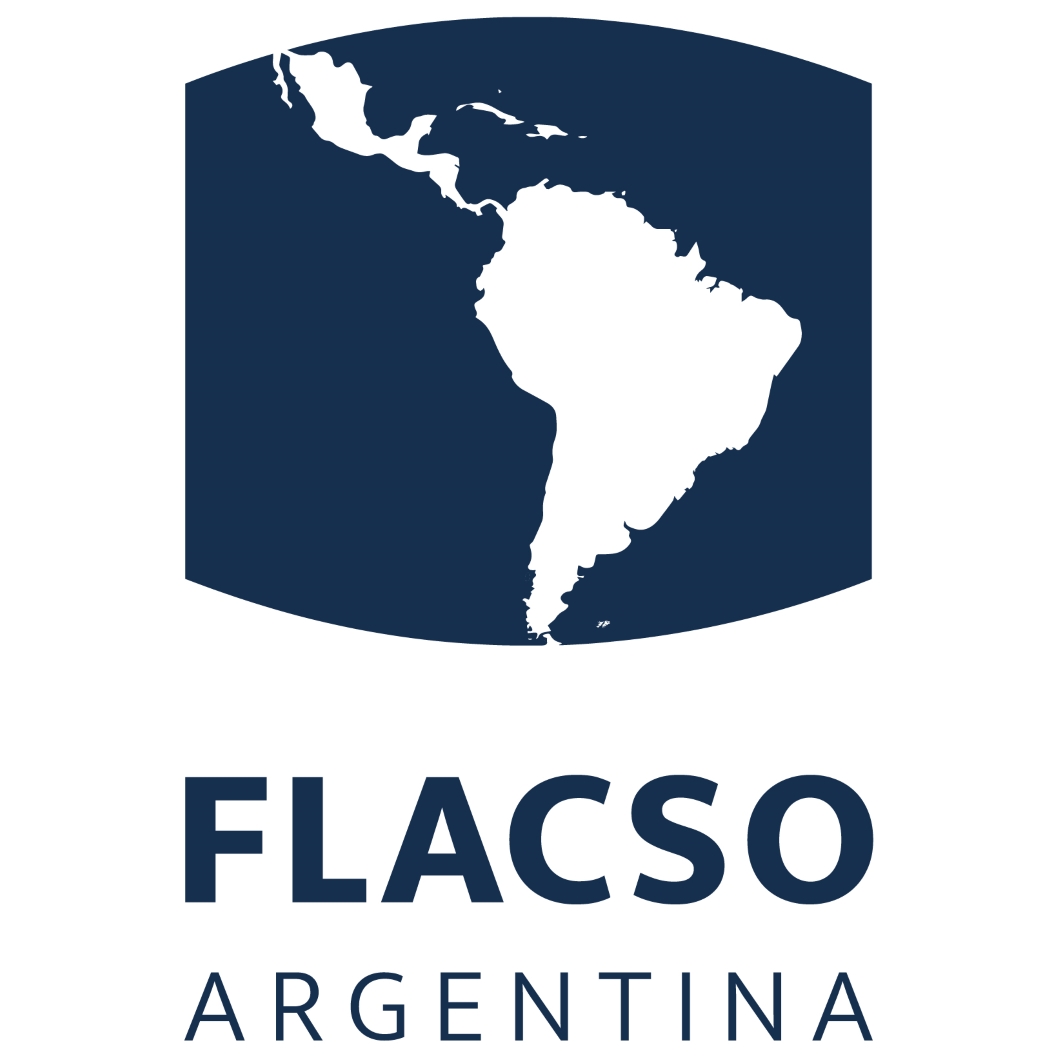

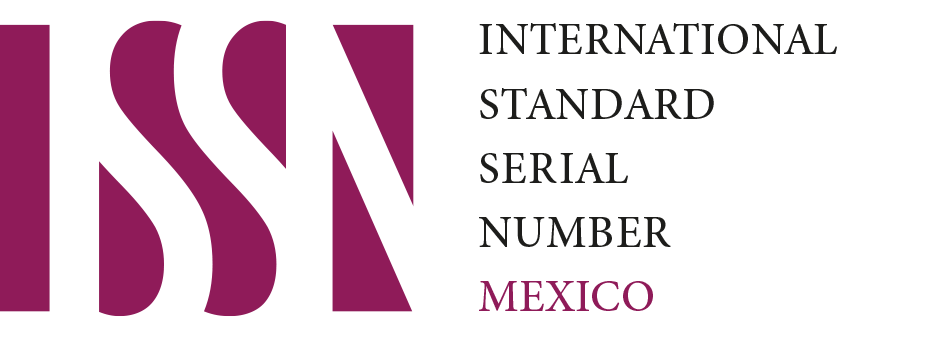
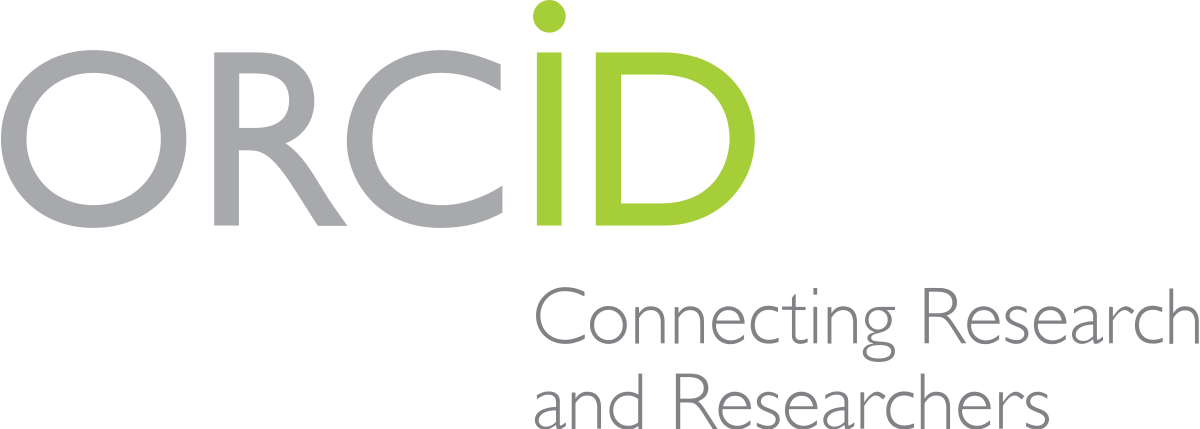



.png)
1.png)


